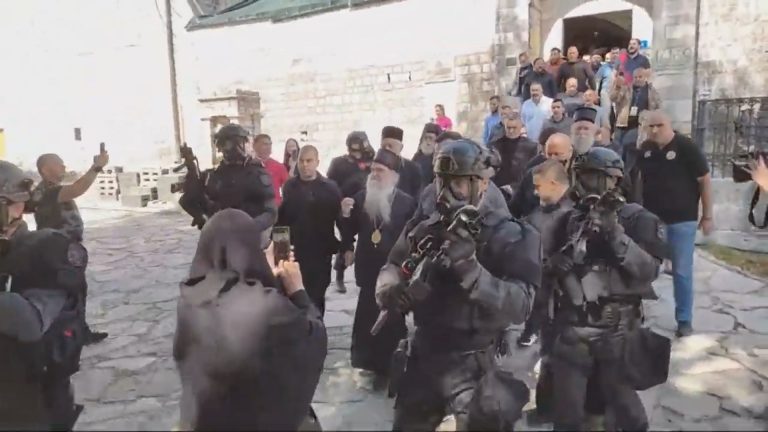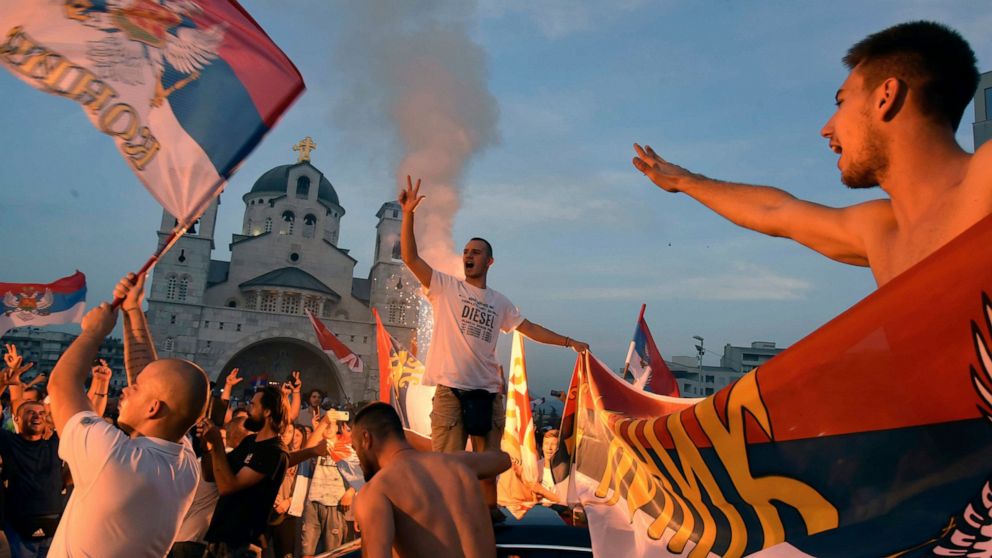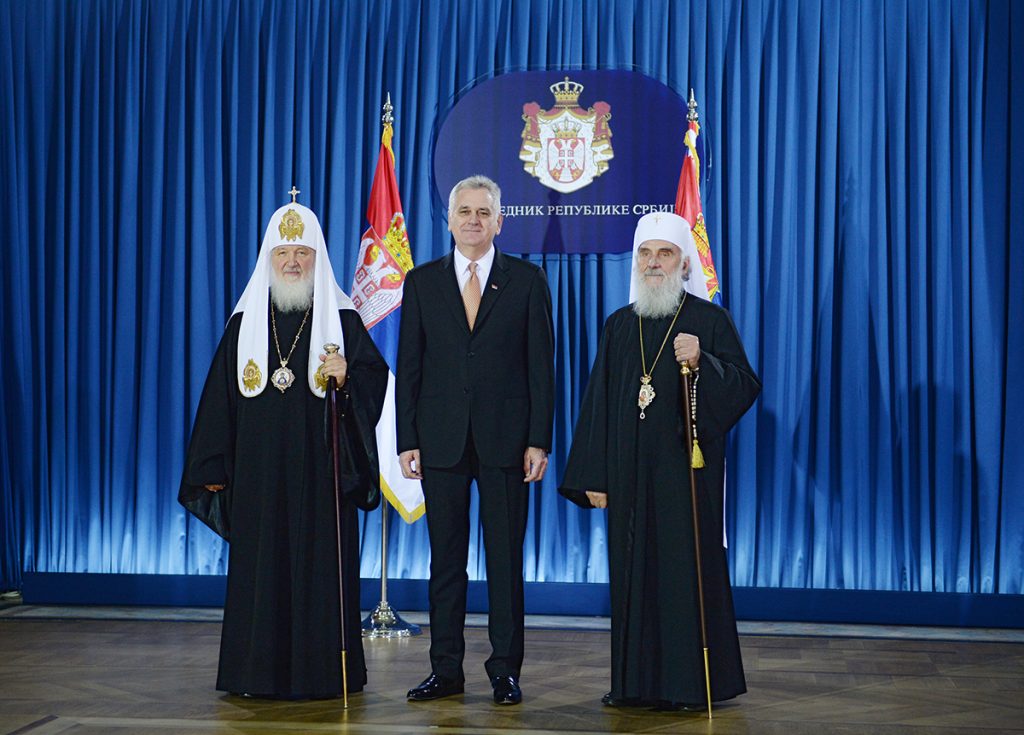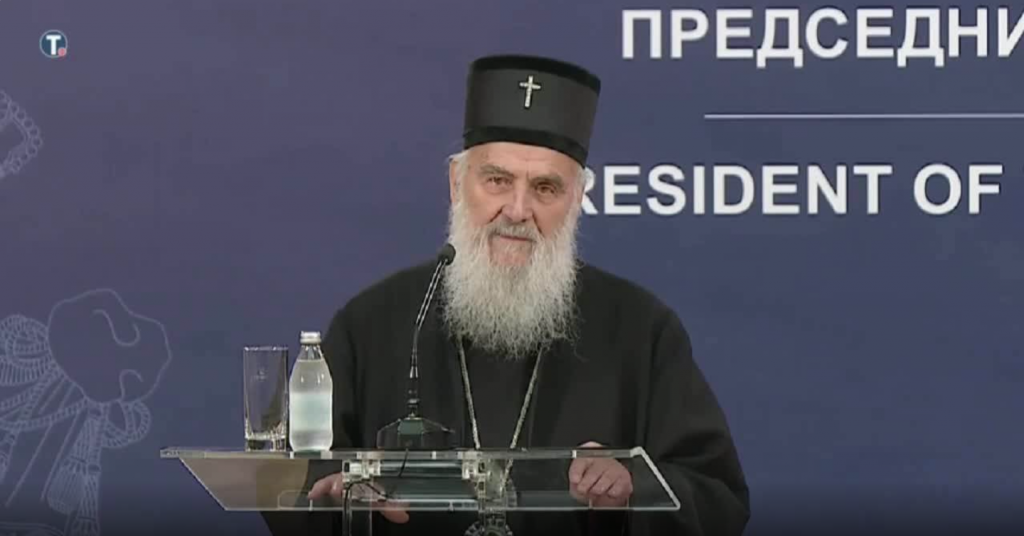Thousands of protesters took to the streets in Montenegro on Sunday to prevent the installation of a new head of the Serbian Orthodox Church. The protests are considered the largest since Montenegro’s independence 15 years ago. However, the ceremony was held in the Serbian Orthodox Church and under strict security measures. Metropolitan Joanikije and Serbian Patriarch Porfirije arrived and departed after the ceremony by helicopter, accompanied by a special counter-terrorism unit.
The two-day protests against the consecration of the Serbian Orthodox Church metropolitan Joanikije, seem to be sparking a bigger conflict in the future in Montenegro. Such scenes are reminiscent of the early 1990s that sparked wars in the Balkans, such as in Croatia, Bosnia and later in Kosovo. At that time, the project of Greater Serbia was mentioned, which the SOC has already turned into “Srpski svet” meaning “Serbian world”, which aims to unite all Serbian Orthodox Churches. The SOC’s claim through the “Serbian world” is not only a spiritual idea but it is traditionally known that the latter precedes Serbian political ideas for rule.

The protests took place in Cetinje, the old capital of Montenegro, which is also the residency of Montenegrin bishops. Historically, supporters of the Serbian Orthodox Church and the Montenegrin Orthodox Church have celebrated separated, even during the time when Montenegro was one of the six Yugoslav republics. In 1992 then Metropolitan Amfilohije had sent Serbian paramilitary formations led by the well-known criminal Zeljko Raznatovic-Arkan, within the buildings of Cetinje monastery, supposedly to protect themselves from Montenegrins. In the same year, criminal Arkan, who is known for the crimes committed in Croatia, Bosnia and Kosovo, had participated in the laying of the groundwork stone of the disputed Church within University of Prishtina Campus.
The SOC’s claims to take ownership of most churches and monasteries that Montenegro considers its own, were supported by the officials in Belgrade. With the amendment of Law on Religious Freedom last year in Montenegro, Serbian President Aleksandar Vucic accused Podgorica for seeking to appropriate the properties of the Orthodox Church. On the other hand, current government led by the pro-Serbian Democratic Front, the Democrats and the civic movement URA, is considered dangerous for the future of Montenegro, because of their pro-Serbian approach. This coalition is even considered to be questioning the independence declared in 2006 by President Milo Djukanovic. Djukanovic was recently accused by the current head of government for arranging protests in the country.
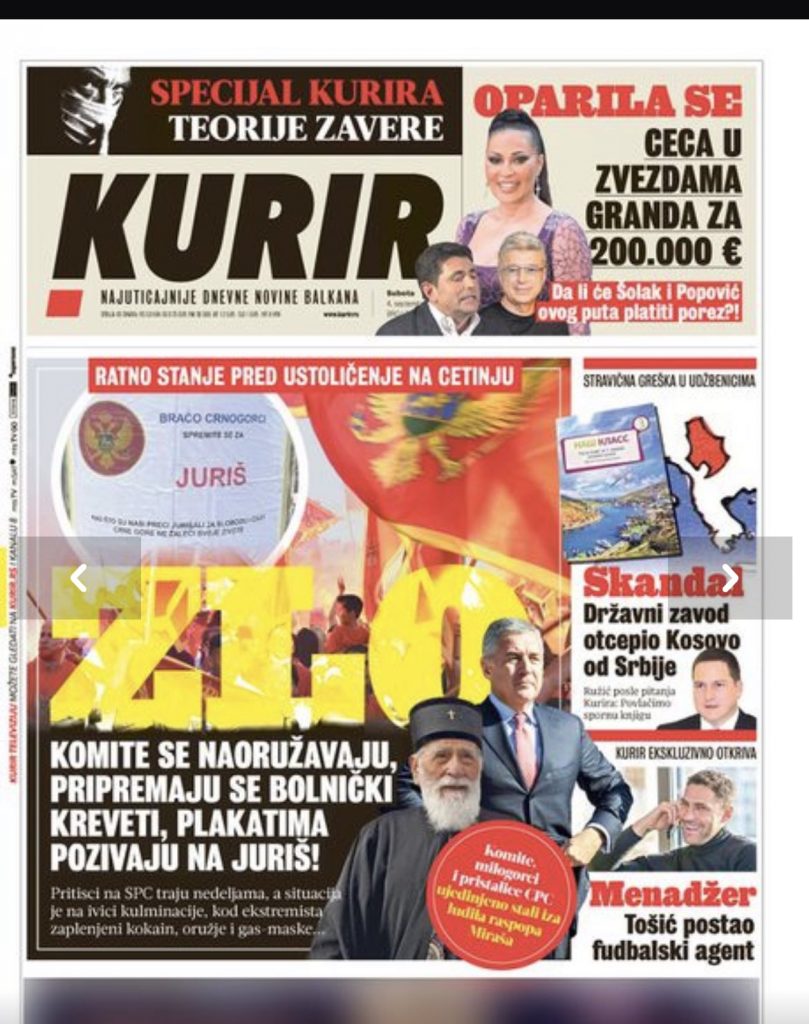
Serbian Orthodox Church currently has the support of the majority political elite in Montenegro for claims over the ownership of the Orthodox Churches there, among them the support of the Deputy Prime minister Dritan Abazovic Albanian family origin in Montenegro. Abazovic is one of three opposition Montenegrin leaders who joined forces to oust Milo Djukanovic party after 30 years in power, and created the pro-Serbian “the white in black” coalition. SOC in the last election had even nominated current Prime Minister Zdravko Krivokapic, who led the pro-Serb Democratic Front in the elections, as Prime Minister of Montenegro. Given that the Prime Minister and the Head of National Security have been picked by the SOC itself, the possibility that the latter will use them to pursue the interests of Serbia, should be expected.
SOC had made a similar provocation this year in Kosovo, holding liturgies without noticing the authorities, in the disputed unfinished Church on the Prishtina University Campus. The liturgy held in June this year had no religious purpose only. The purpose of the ceremony was to provoke populations and destabilize security in Kosovo, as no relevant institution was notified about this.
Its connection with nationalism and politics is not hidden by the SOC clerics even during the installation in Cetinje. In a video posted on Youtube, a symphony of SOC clerics has been seen singing “the return of the Serbian army to Kosovo” , during the singing, an applause of the Serbian nationalists present inside the Church erupts in presence of the Albanian Deputy Prime Minister in Montenegro, Dritan Abazovic. Such a call for the return of the Serbian army to Kosovo should not be ignored by the Kosovo government. Kosovo’s security would be best guaranteed through increased security capacity, acceleration of NATO and EU membership procedures.
It is known that Serbia is Russia’s most reliable ally in the Balkans by defending its interests. Russian geopolitical influence using the Serbian Orthodox Church as a tool is evident from time to time to keep the Balkans tense. Russia’s claims are clear that through Serbia and SOC will create crisis in Montenegro, as a result of which it will undermine Montenegro`s membership in NATO. Russian intelligence have often created such situations in Montenegro, trying to influence the instability of the Western Balkans and the disorientation of the region on the path to Euro-Atlantic integration. Montenegro is already a member of the UN, NATO, the World Trade Organization, OSCE, the Council of Europe, and the Union for the Mediterranean.


